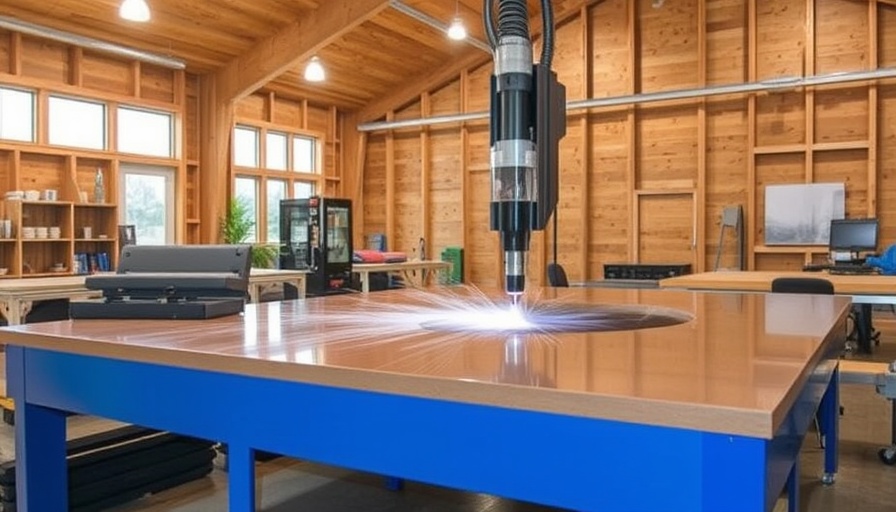
Revolutionizing Construction: The Promise of Waterjet Technology
The construction industry is at a pivotal crossroads, with the pressing need to balance modern housing demands and environmental sustainability. In the heart of this evolution lies waterjet cutting technology, a method that is transforming how we approach building materials. Unlike traditional methods that rely on heat and can often release harmful byproducts, waterjet cutting utilizes a high-pressure stream of water mixed with an abrasive material, resulting in a clean cut without generating toxic fumes. This not only reduces environmental impact but also enhances material integrity.
Environmental Benefits of Waterjet Cutting Techniques
One of the principal advantages of waterjet cutting is its eco-friendliness. Traditional cutting methods often waste valuable materials and can produce hazardous waste. In contrast, waterjet technology minimizes waste through its precision cutting capabilities. This is particularly beneficial for sustainable home construction in urban areas like London, where space and resources are finite. Builders can make the most out of sustainable materials such as recycled steel or eco-friendly composites without sacrificing design or durability.
Integrative Strategies for Sustainable Home Construction
As we consider sustainable building practices, integrating innovative technologies like waterjet cutting paves the way for greater environmental stewardship. It allows architects and builders to be more creative in their designs, pushing the boundaries of what is possible while also adhering to stricter sustainability standards. The technique supports various materials, offering versatility in aesthetic choices without compromising eco-responsibility.
Future Trends in Residential Construction
Looking ahead, we can predict that the demand for waterjet cutting technology will grow as more homeowners in London and similar urban environments seek sustainable solutions. The advancement of smart homes dovetails well with this trend. Next-gen homes equipped with energy-efficient systems can benefit from precisely cut components, leading to improved energy performance. Additionally, as the awareness of eco-conscious living grows, potential buyers will be more inclined to support builders who prioritize sustainability in their materials and methodologies.
Challenges and Considerations in Adopting New Technologies
However, the transition to new technologies like waterjet cutting is not without its challenges. Cost remains a significant factor; while the long-term savings from material efficiency and sustainable practices may justify the initial investment, some builders may hesitate. Knowledge gaps and training on the operation of waterjet machinery are necessary but require time and resources. The industry will need to embrace these challenges to fully realize the benefits of green technologies.
Practical Steps for Homeowners Considering Sustainable Construction
For homeowners keen on embracing modern methods in their construction projects, understanding which materials and technologies are available can empower informed decisions. Engaging with architects and builders who prioritize sustainable practices is crucial. Researching local suppliers who provide waterjet-cut materials can make a significant difference in the overall sustainability of a project.
Building a Sustainable Future Together
Ultimately, as we navigate the journey towards eco-responsible construction, we must recognize the shared responsibility between builders, architects, and homeowners. With methods like waterjet cutting at the forefront, our collective endeavors can shape a future where housing is not only innovative and practical but also kind to the planet. Homeowners in London are uniquely positioned to spearhead this movement, advocating for sustainable choices that will define the homes of tomorrow.
Join the conversation about sustainable home practices and explore how adopting innovative technologies like waterjet cutting can reshape your next building project.
 Add Row
Add Row  Add
Add 




Write A Comment